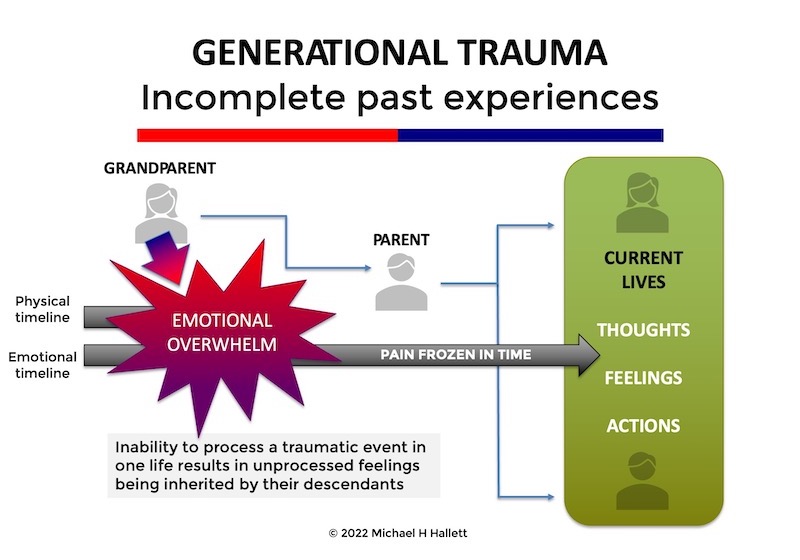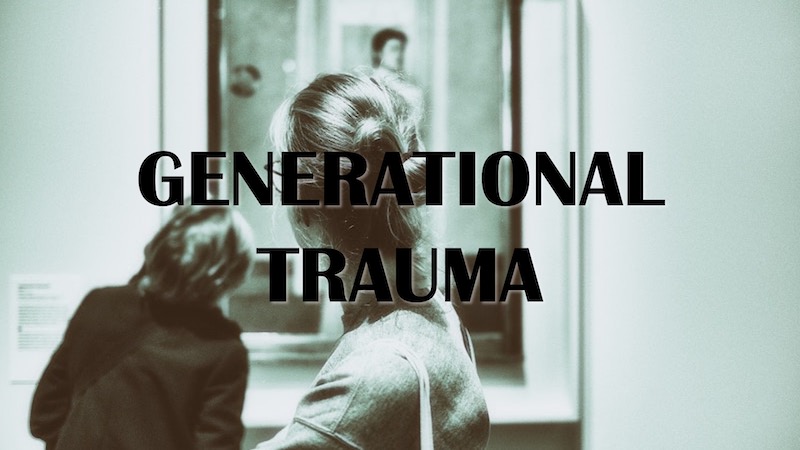How to use surrogate events to release trauma
- 21 April 2023
- Posted by: Michael H Hallett
- Category: Generational trauma , How-to & step-by-step ,

When I started dealing with generational trauma, I didn’t notice the pattern at first. After a while, I noted a correlation between triggering buried trauma and geography. With greater experience I can now state definitively that it’s possible to consciously use surrogate events to trigger and release trauma.
Trauma and geography
In Living with ghosts – confronting generational trauma I describe some of my earliest, seemingly supernatural experiences of inherited trauma surfacing for release.
I wrote how, while visiting The National Archives to seek my grandfather’s war records, I was suddenly and violently spat sideways on the staircase as I approached the location where my grandparents’ painful and shameful divorce records were stored.
And how visiting the house in Cornwall where my grandmother lived following her exile from the family, I was overwhelmed by her pain. All the guilt, shame, and pain of having broken up the family and lost her only daughter.
At a workshop in Bristol in 2018 I was suddenly seized by the thought that “I’m in Bristol!” My father was an adolescent in Bristol in the 1930s. One day, without notice, his father walked out of their house, out of the marriage, out of the family, and out of his life.
Simply being in Bristol triggered the release of my father’s childhood feelings of shock, guilt, and abandonment. They festered in the family DNA for nearly a century.
The common denominator in all three examples is geography. But surrogate events can encompass much more than physical location.
What are surrogate events?
They’re like this blog’s heading image—an injection into a pomegranate that’s a surrogate image for artificial insemination. Surrogate events are artificial events that are close enough to the real thing they trigger genuine physiological responses.
In the context of trauma, that means recreating the traumatic context in some way that’s enough to activate the trauma.
Trauma—whether from a current-life event or inherited—is a frozen, incomplete experience.

A successful surrogate event references the original event sufficiently for our unconscious to feel that it is back in the original trauma. This unfreezes the unprocessed pain of the trauma. It allows us to reconnect with the original, disconnected event, and complete the emotional processing necessary to release it.
In the three instances above, closing the geographical distance was enough. Going to the scene of the crime. Interestingly, in the case of the divorce records, just going to the place they were stored was enough.
Using surrogate events
In all three cases, I stumbled unwittingly into these events. I knew the trip to Cornwall was going to hurt. I hadn’t understood I was creating the preconditions that would mechanically unlock the trauma.
Which means that—if we understand the nature of a trauma with sufficient accuracy—we can consciously design surrogate events.
We can visit locations where family traumas happened with the conscious intent to go back in time and reconnect with the original event.
For traumas around nurturing, our bodies, and our sexuality, conscious touch can trigger the release of long-buried trauma. This area is obviously a minefield that’s outside the scope of this article—and, indeed, of my work.
To create a surrogate event, think clearly about the original trauma. Use the journalist’s Five W’s to break it down into its component parts:
- What happened?
- When did it happen?
- Where did it happen?
- Who did it happen to?
- Why did it happen?
What traces remain? Physical locations? Photographs? Archives? The more aspects of the original trauma you can incorporate into the event, the greater the likelihood of success.
Be emotionally prepared for the trauma to release. Remember that You can only heal a trauma when its triggered. Make time and space for the event. Arrange any support you need from friends and family beforehand. Stay grounded and hydrated.
And then see what you can birth by stepping back in time.
Next steps
For further resources on generational trauma, both free and paid, please click on this image.
Photo by Deon Black on Unsplash

